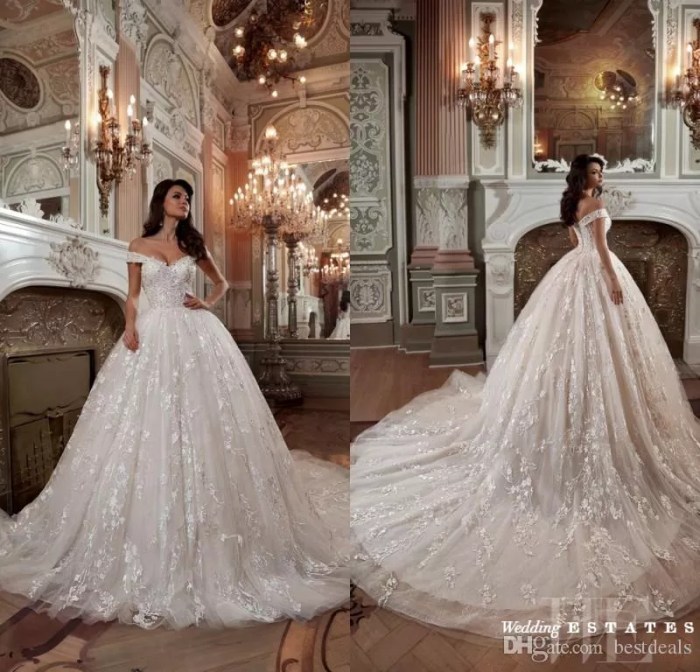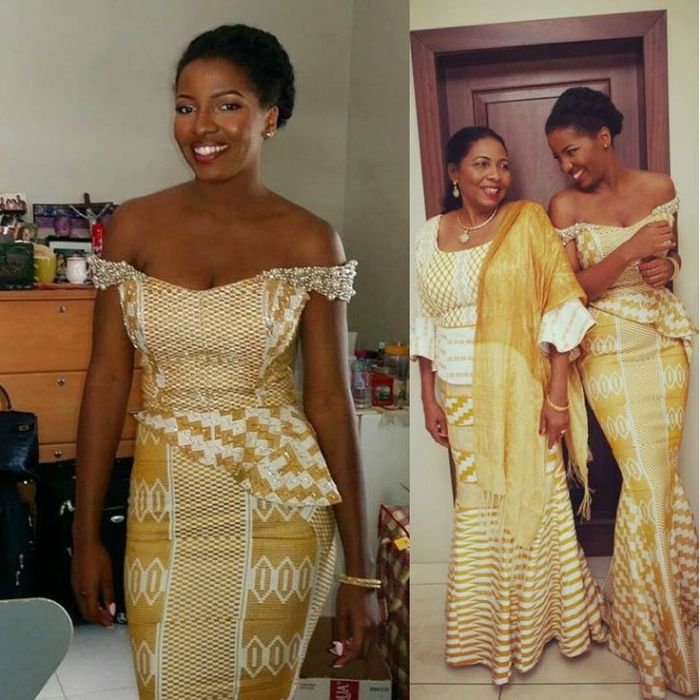Top Wedding Dress Designers
Wedding dresses designers names – The world of bridal fashion is dominated by a select group of designers whose creations have shaped trends and defined iconic moments. This section explores ten of the most influential wedding dress designers, examining their signature styles, iconic designs, and evolution over time.
Ten Most Influential Wedding Dress Designers
This table highlights ten designers who have significantly impacted the wedding dress industry. Note that “Year Established” refers to the approximate year the designer began creating wedding gowns or a significant milestone in their career.
Many renowned wedding dresses designers names come to mind when considering bridal attire, each with their unique style. A striking detail, like the addition of a blue sash, can significantly elevate a design, as seen in many examples such as those found on this site featuring a wedding dress with blue sash. Ultimately, the choice of designer and those subtle yet impactful details significantly influence the overall look of the wedding dress.
| Designer Name | Nationality | Notable Design Style | Year Established (approx.) |
|---|---|---|---|
| Vera Wang | American | Modern, sleek, often incorporating dramatic silhouettes and unconventional fabrics. | 1990 |
| Carolina Herrera | Venezuelan | Classic, elegant, often featuring romantic details and luxurious fabrics. | 1981 |
| Oscar de la Renta | Dominican | Romantic, glamorous, known for intricate details and luxurious fabrics. | 1965 |
| Monique Lhuillier | Filipino-American | Romantic, whimsical, often incorporating lace, tulle, and delicate embellishments. | 1996 |
| Elie Saab | Lebanese | Romantic, ethereal, often featuring intricate beading and delicate lace. | 1982 |
| Galia Lahav | Israeli | Bohemian, glamorous, often featuring intricate beading and unique silhouettes. | 1985 |
| Inbal Dror | Israeli | Modern, sexy, often featuring daring silhouettes and intricate beadwork. | 2004 |
| Zuhair Murad | Lebanese | Glamorous, luxurious, often featuring intricate embellishments and bold silhouettes. | 1997 |
| Pronovias | Spanish | Classic, romantic, known for a wide range of styles and affordability. | 1922 |
| Temperley London | British | Bohemian, romantic, often featuring flowing fabrics and intricate embroidery. | 1998 |
Iconic Wedding Dresses
These dresses exemplify the designers’ signature styles and have made a significant impact on bridal fashion.
- Vera Wang’s 1990s minimalist slip dress: A revolutionary departure from traditional bridal styles, it popularized the simple, elegant silhouette.
- Carolina Herrera’s classic ballgown: Epitomizing timeless elegance, Herrera’s ballgowns often feature structured silhouettes and luxurious fabrics like silk satin.
- Oscar de la Renta’s romantic lace gown: Known for their intricate detailing and luxurious fabrics, de la Renta’s gowns often incorporate delicate lace and romantic embellishments.
- Monique Lhuillier’s whimsical tulle gown: Often featuring layers of tulle and delicate lace, Lhuillier’s gowns evoke a sense of effortless romance and whimsy.
- Elie Saab’s ethereal lace gown: Saab’s gowns are renowned for their delicate lace, intricate beading, and ethereal silhouettes.
Evolution of Design Styles
The following Artikels how three designers’ styles have evolved over time.
- Vera Wang: Initially known for minimalist designs, Wang has expanded her aesthetic to include more elaborate gowns with dramatic silhouettes and unconventional fabrics. She continues to push boundaries with innovative details and textures.
- Carolina Herrera: While maintaining her core aesthetic of classic elegance, Herrera has incorporated more modern elements into her designs, including sleek silhouettes and unexpected details.
- Monique Lhuillier: Lhuillier’s style has remained consistent in its romantic and whimsical approach, but she has broadened her range to include more diverse silhouettes and fabric choices, catering to a wider range of brides.
Designer Styles and Aesthetics
This section compares and contrasts the aesthetics of contemporary designers and explores the defining elements of Vera Wang’s signature style, while also introducing emerging designers.
Comparison of Contemporary Designers
Three prominent contemporary designers showcase distinct aesthetic approaches.
- Designer A (Example: Galia Lahav): Known for intricate beading, dramatic silhouettes, and a focus on luxurious fabrics like lace and silk. Often features a bohemian or glamorous vibe.
- Designer B (Example: Inbal Dror): Characterized by modern, body-conscious silhouettes, often incorporating daring necklines and sheer panels. The aesthetic is more contemporary and sensual.
- Designer C (Example: Mira Zwillinger): Emphasizes romantic, ethereal styles with delicate lace, flowing fabrics, and a focus on creating a light and airy feel. The overall vibe is dreamy and romantic.
Vera Wang’s Signature Style
Vera Wang’s designs are easily recognizable for specific elements.
- Clean lines and architectural silhouettes
- Use of unconventional fabrics, such as silk crepe and duchess satin
- Modern, often minimalist detailing
- Emphasis on a sophisticated, sleek aesthetic
- Occasional incorporation of dramatic elements, like dramatic trains or unexpected necklines
Emerging Wedding Dress Designers
These designers are pushing boundaries in innovation and sustainability.
- Designer X (Fictional Example): Focuses on upcycled and sustainable fabrics, creating unique gowns with a vintage-inspired aesthetic. Their designs often incorporate hand-stitching and intricate detailing.
- Designer Y (Fictional Example): Utilizes 3D-printing technology to create innovative and customizable gowns with intricate designs. Their approach is highly technological and futuristic.
- Designer Z (Fictional Example): Specializes in minimalist, ethically sourced gowns, emphasizing simple silhouettes and natural fabrics like organic cotton and linen. Their focus is on transparency and ethical production.
Price Ranges and Target Markets
This section explores the price ranges associated with wedding dresses from various designers and proposes a marketing campaign for a new designer.
Price Ranges by Designer Category
The price of a wedding dress varies significantly depending on the designer and the style.
| Designer Category | Price Range (USD) | Target Customer Profile |
|---|---|---|
| High-End | $5,000 – $20,000+ | Affluent brides seeking luxurious, bespoke designs. |
| Mid-Range | $1,500 – $5,000 | Brides seeking quality designs with a balance of style and affordability. |
| Budget-Friendly | Under $1,500 | Brides seeking affordable yet stylish options. |
Marketing Campaign for a New Designer
A hypothetical marketing campaign targeting millennial brides focuses on digital channels and emphasizes sustainability and personalization.
- Target Audience: Millennial brides (25-35 years old) who are environmentally conscious and value unique, personalized experiences.
- Messaging: Focus on sustainability, ethical production, and customizable designs. Highlight the unique story behind the brand and the designer’s vision.
- Marketing Channels: Instagram, Pinterest, TikTok, influencer collaborations, targeted online advertising, and participation in eco-conscious bridal events.
Case Study: Successful Wedding Dress Designer, Wedding dresses designers names
This fictional case study illustrates a successful business model.
- Designer Name: “Anya Designs”
- Business Model: Direct-to-consumer online sales with a limited number of exclusive retail partnerships. Focus on made-to-order designs to minimize waste.
- Target Market: Eco-conscious brides seeking unique, sustainable gowns.
- Marketing Strategies: Strong social media presence, influencer marketing, collaborations with ethical wedding blogs and publications, and participation in sustainable fashion events.
Impact of Social Media and Trends: Wedding Dresses Designers Names
Social media has profoundly impacted wedding dress trends and designer visibility. This section explores the influence of platforms like Instagram, Pinterest, and TikTok, along with significant trends over the past decade.
Influence of Social Media
Platforms like Instagram, Pinterest, and TikTok have democratized access to bridal fashion, exposing brides to a wider range of designers and styles. These platforms also influence trends by showcasing popular designs and creating viral moments.
Wedding Dress Designs Influenced by Current Trends

Source: weddingestates.com
Several styles reflect current fashion trends.
- Bohemian: Flowing fabrics, lace details, earthy tones, often featuring relaxed silhouettes.
- Minimalist: Simple silhouettes, clean lines, minimal embellishments, often featuring luxurious fabrics in neutral colors.
- Romantic: Lace, tulle, delicate embellishments, often featuring classic silhouettes with a touch of modern flair.
Timeline of Wedding Dress Trends (Past Decade)

Source: sandiegotowingca.com
This list highlights key trends and associated designers.
- 2014-2016: Illusion Necklines and Backs: Popularized by several designers, including Vera Wang and Pronovias.
- 2017-2019: Statement Sleeves: Off-the-shoulder, bell sleeves, and dramatic puff sleeves gained popularity, with designers like Monique Lhuillier and Galia Lahav leading the trend.
- 2020-2022: Minimalist and Sustainable Designs: A growing emphasis on simplicity, ethical sourcing, and sustainable practices was seen across various designers.
- 2023-Present: Romantic and Ethereal Styles: A resurgence of classic romantic styles, with a focus on delicate lace, tulle, and flowing fabrics.
Sustainability and Ethical Considerations
This section examines the growing importance of sustainability and ethical practices in wedding dress design.
Designers Committed to Sustainable Practices
Several designers are leading the way in ethical and sustainable bridal fashion.
- Designer A (Fictional Example): Uses organic and recycled fabrics, minimizing waste through efficient production methods and offering dress alterations and rentals.
- Designer B (Fictional Example): Partners with local artisans and uses traditional hand-crafting techniques to reduce environmental impact and support fair labor practices.
- Designer C (Fictional Example): Transparently sources materials, ensuring fair wages and safe working conditions throughout the supply chain. They also offer a dress recycling program.
Challenges and Opportunities for Sustainable Business Models
The challenges include the higher cost of sustainable materials and the need for transparent supply chains. Opportunities lie in increased consumer demand for ethical products and the potential for innovative, eco-friendly designs.
Ethically Made Wedding Dress
An ethically made wedding dress prioritizes fair labor practices, responsible material sourcing, and minimal environmental impact. This includes using sustainable fabrics, ensuring fair wages and safe working conditions for garment workers, and minimizing waste throughout the production process.
FAQ Summary
What are some common fabrics used in high-end wedding dresses?
High-end wedding dresses often feature luxurious fabrics like silk (including charmeuse, crepe, and organza), lace (often hand-crafted), tulle, and delicate beading or embroidery.
How far in advance should I book a consultation with a designer?
Booking a consultation with a high-demand designer can require several months, even a year or more, in advance, especially for popular wedding seasons.
What is the average alteration cost for a wedding dress?
Alteration costs vary significantly depending on the extent of adjustments needed, but generally range from a few hundred to over a thousand dollars.
Can I purchase a sample wedding dress?
Some designers sell sample dresses at a discounted price, but availability and condition vary. It’s best to inquire directly with the designer or bridal salon.
